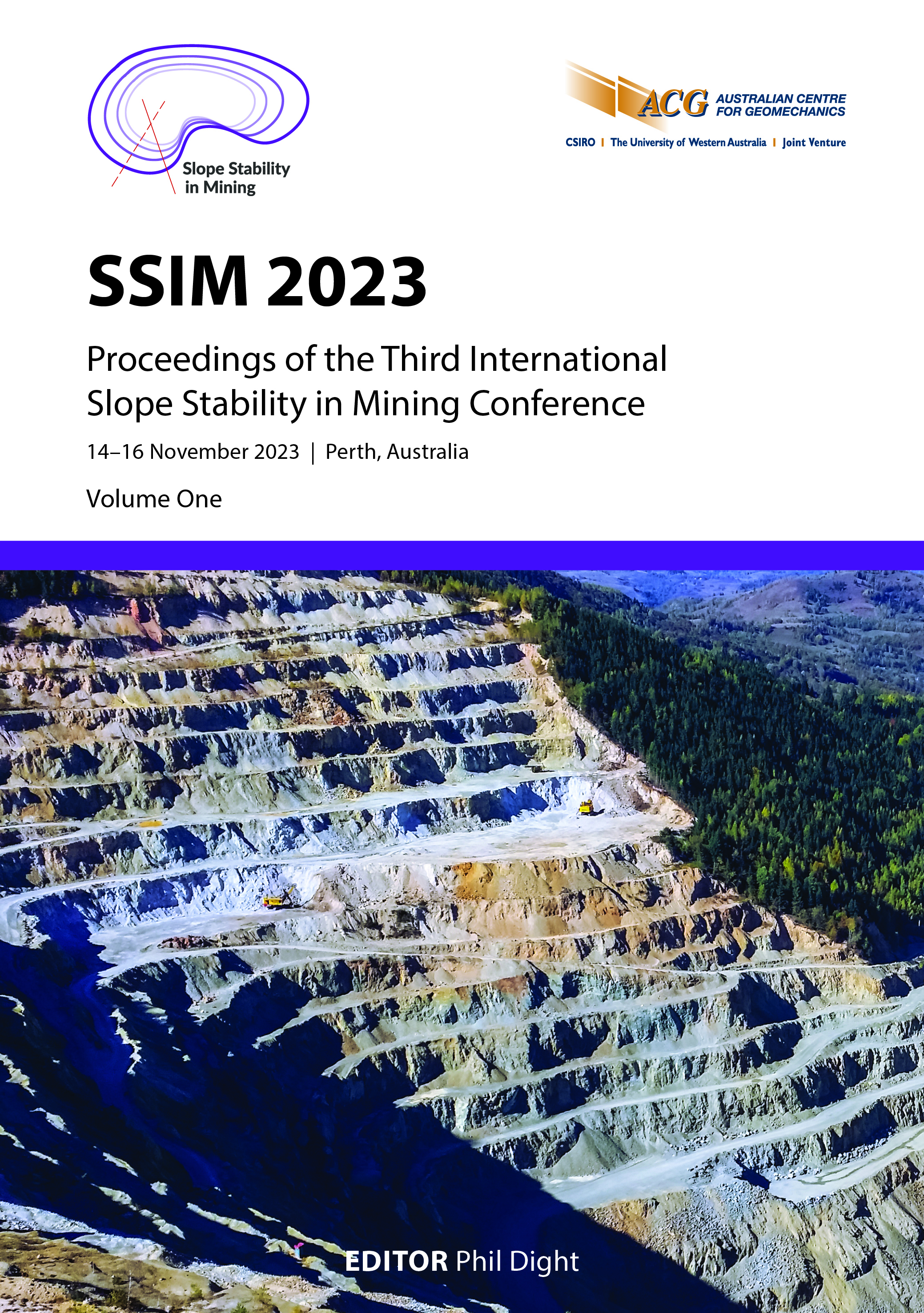Evolution of the pit slope design process at Western Mesquite Mines

|
Authors: Newcomen, HW; Schmidt, E; Sabo, S |
DOI https://doi.org/10.36487/ACG_repo/2335_07
Cite As:
Newcomen, HW, Schmidt, E & Sabo, S 2023, 'Evolution of the pit slope design process at Western Mesquite Mines', in PM Dight (ed.), SSIM 2023: Third International Slope Stability in Mining Conference, Australian Centre for Geomechanics, Perth, pp. 143-160, https://doi.org/10.36487/ACG_repo/2335_07
Abstract:
Open pit mining has been ongoing at Western Mesquite Mines since the early 1980s. This low-grade gold deposit is located in a structurally complex geologic regime of metamorphic rocks beneath up to 120 m of tertiary sediments ranging from silts to conglomerates. Original slope design angles were relatively steep, did not differentiate between the surficial and bedrock geologic units, and resulted in frequent slope instability events. Through a process of slope performance evaluations in historically mined pits, back-analyses of failures, rock mass quality mapping, and geotechnical drilling and laboratory testing, slope angles have been optimised for the geotechnical units encountered in the various pits at the mine. The Brownie Pit is the most recent pit to be designed and mined. The performance of the slopes in the Brownie Pit during the first phase of mining indicated that the design slope angles were appropriate, with one multi-bench instability in the rock and manageable deformations in the tertiary sediments. This case history outlines the evolution of the investigation and design process in this unique geologic environment, and illustrates how ongoing geotechnical characterisation and documentation of slope performance can deliver optimised slope designs, improved mining productivity and safer working conditions.
Keywords: pit slope designs, back-analysis, slope performance, case history
References:
Barton, N & Choubey, V 1977, ‘The shear strength of rock joints in theory and practice’, Rock Mechanics, vol. 10, pp. 1–65.
BGC Engineering Inc 2015, Proposed Vista Pit Expansion Slope Stability Assessments.
BGC Engineering Inc 2017, Proposed Lola-VE2 Expansion Slope Stability Assessment.
BGC Engineering Inc 2020, Western Mesquite Mines Brownie Pit (Phase 1) Open Pit Slope Designs.
Bieniawski, ZT 1976, ‘Rock mass classification in rock engineering’, in ZT Bieniawski (ed.), Proceedings of the Symposium on Exploration for Rock Engineering, pp. 92–106.
Brawner Engineering Ltd 1999, Mesquite Mine Pit Slope Design and Development.
Call & Nicholas 1986, Mesquite Mine Pit Slope Design.
Engineering Analytics 2009, Slope Stability Analyses of the East Rainbow Pit Expansion.
International Society for Rock Mechanics 1981, ‘Suggested methods for determining hardness and abrasiveness of bocks’, in Brown (ed.), Rock Characterization, Testing and Monitoring: ISRM Suggested Methods, pp. 95–96.
JRT GeoEngineering 2011, Geotechnical Site Inspection and Review of NGI’s Mesquite Mine.
Manske, SL 1991, Epithermal gold in gneissic rocks of the Mesquite District, Imperial County, California, PhD thesis, Stanford University, Stanford.
Read, J & Stacey, P 2009, Guidelines for Open Pit Slope Design, CRC Press, Boca Raton.
Ricks 2023, Mesquite: Geology and Mineralization, internal report.
Shepherd Miller 1999, Geotechnical Stability Evaluation of the Rainbow Pit Extension Newmont’s Mesquite Mine.
Tosdal, RM, Willis, GF, Manske, SL, Lang, D & Lusk, M 1991, ‘Day 1: Mesquite Mining District, southeastern California’, Society of Economic Geologists Guidebook Series, vol. 12, pp. 87–103.
Willis, GF & Tosdal, RM 1992, ‘Formation of gold veins and breccias during dextral strike-slip faulting in the Mesquite Mining District, Southeastern California’, Economic Geology, vol. 87, no. 8, pp. 2002–2022.
© Copyright 2026, Australian Centre for Geomechanics (ACG), The University of Western Australia. All rights reserved.
View copyright/legal information
Please direct any queries or error reports to repository-acg@uwa.edu.au
View copyright/legal information
Please direct any queries or error reports to repository-acg@uwa.edu.au

